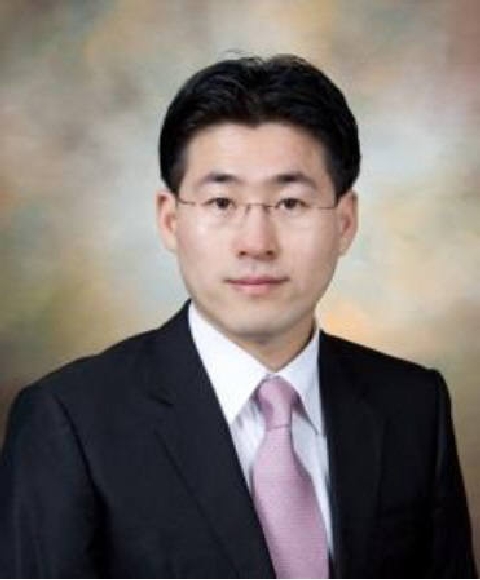A technology to increase purity of ‘single-walled carbon nanotubes (SWCNT),’ which is known to be a next-generation semiconductor material to replace silicon, up to 99.9925%, and thus to accelerate commercialization has been developed by domestic researchers. It is forecast to accelerate commercialization faster than the ‘new dream material’ graphene.
A research team led by Professor Jin Seong-hun from Dept. of Electronic Engineering at the University of Incheon and Professor John Rogers at the University of Illinois announced on the 6th that it had developed a large-area purification technology to purify, and thus commercialize high-purity carbon nanotubes using microwave. This study outcome will be published in Natures Communications.
Last year, the research team discovered a physical phenomenon of carbon nanotube called ‘nanoscale thermocapillary flow,’ and thus developed a new purification technology. As the team solved issues concerning purity, structure alignment and density, which had been pointed out as limitations in the previous studies, the technology commercialization could be accelerated.
CNT produces a higher level of electron mobility than silicon. In addition, the line width of semiconductor circuits can be designed to be smaller. In particular, SWCNT produces electrical conductivity 10 ? 100 times higher than multiple-walled carbon nanotubes, which are called CNT, and can be applied to a number of fields. However, as the problems of low purity and the alignment structure tangling up on the wafer were not resolved, studies have been concentrated more on graphene.
Professor Jin’s team explained that it had overcome the limitations of SWCNT with this study. Most importantly, unlike other materials that are to be applied with a new semiconductor production process, SWCNT can be used in the existing process.
The research team overcame the limitations by using microwave, which is applied to microwave ovens. Microwave can be irradiated evenly on the surface of a wafer regardless of the size. Therefore, it increases yield even on a large area.
It requires at least four ? five masks to create a switching element and impurities form during the four to five-stage processes. Using microwave, the process is reduced to one or two stages, and thus the possibility of impurity formation is lowered naturally. As the process is reduced by more than 60%, equipment investment and production time are also decreased.
Professor Jin’s team realized high-purity (99.9925% purity) semiconductor type SWCNT using electromagnetic wave. In the past, transistor-based switching elements had been created by letting heat flow only in the metallic CNT using thermocapillary flow-based purification technique (TcEP). In this study, however, an eddy current was generated using large-area electromagnetic waves without selective heating regulation based on the transistor, and thus the process and operating method were simplified.
This study opened up a possibility to realize a micro process for less than 10 nanometers. The industry forecast that a 7-nanometer process would be implemented in around 2020. However, it is difficult to make a circuit line smaller than this using silicon, and thus a next-generation semiconductor material is essential.
“Using SWCNT obtained through this research, we can realize micro process for circuit line measuring as small as 1 nanometer,” said Professor Jin. “The level of interest in this area is relatively lower than graphene. Nevertheless, it has a greater competitive edge in terms of commercialization.”
Bae Ok-jin | withok@etnews.com
단일벽탄소나노튜브(SWNT) 상용화 길 열렸다
실리콘을 대체하는 차세대 반도체 소재로 꼽히는 ‘단일벽탄소나노튜브(SWCNT)’의 순도를 99.9925%로 높여 상용화를 앞당길 수 있는 기술이 국내 연구진에 의해 개발됐다. ‘꿈의 신소재’로 불리는 그래핀보다 더 빠르게 상용화할 수 있는 기반이 될 것으로 전망됐다.
진성훈 인천대 전자과 교수와 존 로저스 미국 일리노이대 교수 연구팀은 마이크로 웨이브를 사용해 초고순도 탄소나노튜브를 정제해 상업화할 수 있는 대면적 정제기술을 개발했다고 6일 밝혔다. 해당 연구는 네이처 커뮤니케이션스에 게재될 예정이다.
해당 연구팀은 지난해 ‘나노크기 열모세관 유동(Nanoscale Thermocapillary Flow)’이라는 탄소나노튜브의 물리적 현상을 발견하고 새로운 정제 기술을 개발했다. 지난 연구에서 한계로 지적된 순도, 구조 정렬, 밀도 문제를 1년여 만에 해결해 상용화에 속도를 낼 수 있게 됐다.
CNT는 실리콘보다 전자 이동도가 높고 반도체 회로 선폭을 더 미세하게 설계할 수 있다. 특히 SWCNT는 CNT로 부르는 다중벽탄소나노튜브(MWCNT)보다 전기 전도성이 10~100배 높고 여러 분야에 응용할 수 있는 게 강점이다. 하지만 웨이퍼상 정렬 구조가 엉키고 순도가 떨어지는 등의 문제를 극복하지 못해 상대적으로 그래핀 분야에 연구가 집중됐다.
진성훈 교수팀은 이번 연구로 SWCNT의 한계를 극복했다고 설명했다. 무엇보다 새로운 반도체 생산 공정을 적용해야 하는 다른 소재와 달리 SWCNT는 기존 공정을 그대로 사용할 수 있는 게 강점이다.
한계를 극복한 결정적 방법은 전자레인지에 사용하는 마이크로 웨이브 전자기파를 이용한 것이다. 웨이퍼 면적에 관계없이 고르게 조사할 수 있어 대면적에서도 수율을 높일 수 있다.
스위칭 소자를 만드는 데 최소 4~5장의 마스크가 필요하고 4~5단계 공정을 거치며 불순물이 생기는데 마이크로 웨이브를 사용하면 공정이 1~2단계로 줄어 자연스럽게 불순물 발생 가능성도 낮아진다. 공정이 60% 이상 줄어든 것이어서 관련 장비 투자와 생산시간도 단축할 수 있다.
진성훈 교수팀은 전자기파를 이용해 순도 99.9925%의 초고순도 반도체형 SWCNT를 실현했다. 기존에는 열모세관 유동 현상 기반의 정제방법(TcEP)을 이용해 선택적으로 금속형 CNT에만 열을 흐르게 해 트랜지스터 기반의 스위칭 소자를 만들었다. 이번에는 선택적 발열을 트랜지스터 기반으로 조절할 필요없이 대면적 전자기파로 맴돌이 전류(eddy current)를 발생시켜 공정과 구동방법을 단순화했다.
이번 연구에 따라 10나노미터 이하 미세공정 실현 가능성도 활짝 열렸다. 업계에서는 7나노미터를 2020년께 구현할 것으로 봤지만 이보다 더 얇은 회로선폭은 실리콘으로 만들기 힘들어 차세대 반도체 소재가 반드시 필요하다.
진성훈 교수는 “이번 연구 결과로 얻은 SWCNT를 이용하면 1나노 수준까지 구현할 수 있다”며 “상대적으로 그래핀보다 관심이 적은 분야지만 상용화에서 경쟁력이 더 크다”고 말했다.
배옥진기자 | withok@etnews.com
